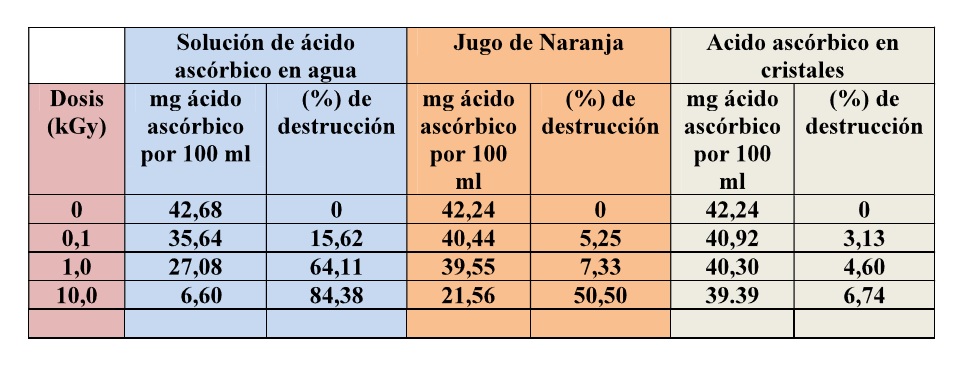Efecto de la radiación gamma sobre la vitamina C
DOI:
https://doi.org/10.33017/RevECIPeru2011.0005/Keywords:
Irradiation, Vitamin C, dose, quarantine treatment.Abstract
One of the organic compounds more sensitive to temperature, storage and radiation is ascorbic acid. In an irradiation plant quarantine treatment, be processed fruits and vegetables, vegetable carriers of vitamin C. Was irradiated at a given concentration of vitamin C (42.24 mg/100 ml) contained in 3 different media: orange juice in water solution and pure ascorbic acid crystals, then diluted in water, we applied different doses of radiation Gamma (0, 0.1, 1.0, and 10 kGy), the dose rate was 7.433 GY / min.The results showed that higher percentages of vitamin C destruction irradiated to the respective doses were presented in the solution of vitamin C contained in water, (15.62, 64.11 and 84.38%) due to the indirect effect of gamma radiation , then vitamin C contained in orange juice, (5.25, 7.33 and 50.50%) This is because the other constituents of orange juice, have a protective effect of vitamin C against radiation, vitamin C crystals, was the one with the lowest percentages of Destruction (3.13, 4.60 and 6.74%). The different samples showed an initial content of 42.24 mg of vitamin C per 100 ml of the selected substrate. A dose of 0.1 kGy the percentage of destruction in the water solution was 15.62% while in the orange juice and glasses was 5.25% and 3.13% respectively, at a dose of 1 kGy showed the following percentages of destruction solution 64.11; juice crystals and 7.33 respectively 4.60% and the dose of 10 kGy the destruction of vitamin C in solution was 84.38, in orange juice 50.50 % and in crystals 6, 79% demonstrated that the type of substrate and the dose plays an important role in the effects of radiation on vitamin C. In an irradiation facility for quarantine treatment of fruits and vegetables are applied about 0.1 kGy dose, so the vitamin C losses will be minimal.


